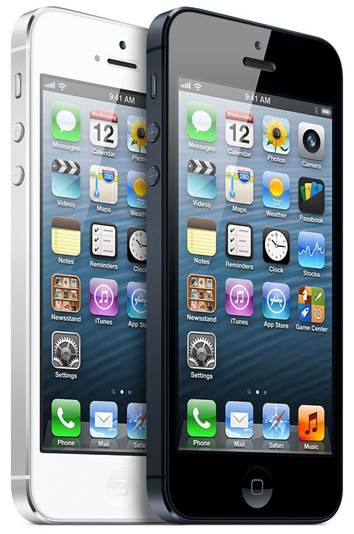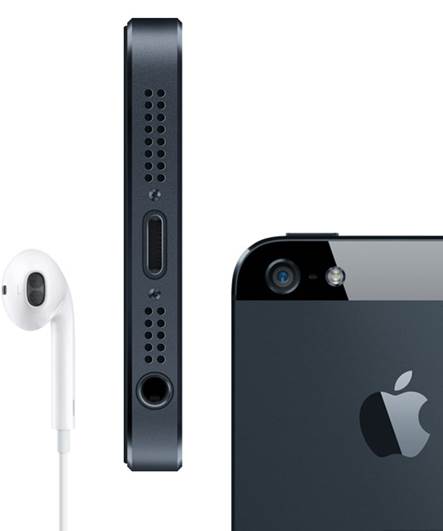An outstanding handset, but it's just
piped to the post by Samsung's bigger and better Galaxy S III
Apple has previously stuck to its guns by
releasing phones with 3.5in screens while its rivals have upped the ante with
larger displays. The launch of the iPhone 5 saw Apple relent, fitting its
latest phone with a 4in, 640 x 1136 panel.
Our first thoughts concerned the aspect
ratio; we're used to Apple phones using 3:2 screens, but the panel used here is
barely broader than 16:9. That means it's narrower than the 16:10 found on most
phones and, initially, it feels too skinny.

Apple
iPhone 5
The screen's maximum brightness of 582cd/m2
is superb; the contrast ratio of 1058:1 makes for blacks that are deep and
dark, and the pixel density remains at 326ppi. Text is pin-sharp and colours
are accurate, if muted. Whether it's better than Samsung's Galaxy S III is a
matter of taste, but we prefer the Samsung's vibrancy.

An
outstanding handset, but it's just piped to the post by Samsung's bigger and
better Galaxy S III
The rear glass panel has been replaced by
aluminium and build quality is of a high standard. At 112g, it's 28g lighter
than the 4S and undercuts all its rivals. We're not enamoured of the Lightning
connector, which requires an adapter for old accessories, but this is the most
attractive smartphone as well as one of the best built.
The 8-megapixel camera offers great
quality, with sharp, accurate images that match those of the Galaxy S III.
There's no burst mode, unlike the Samsung, but Apple has added a panorama
feature in its iOS 6 update.
Google Maps has been replaced by Apple's
own software in iOS 6, and the quality is mixed, although a separate Google
Maps app has now been released. We've no issues with Apple's other
enhancements: Facebook is the star of improved social network integration;
iCloud has better sharing; and Siri understands more commands.
Apple's A6 processor looks like it's behind
the times with two cores rather than four, and its clock speed - which varies
between 800MHz and 1.2GHz - lags behind on paper. There was no sign of
sluggishness in our benchmarks, however. The iPhone S's SunSpider score of
932ms was beaten only by the 920ms score of the Nokia Lumia 920, and its 1674
result in Geekbench is behind only Samsung's Galaxy S III and Note II; the
former scored 1782 and the latter 1956. In the 3D-heavy GLBenchmark, the iPhone
5's 39fps outpaced the Note II's 17fps.

Apple's
A6 processor looks like it's behind the times with two cores rather than four,
and its clock speed - which varies between 800MHz and 1.2GHz - lags behind on
paper.
Navigation in iOS 6 is flawlessly smooth
and there's no sluggishness in games - performance is on a par with the Galaxy
S III, which has seen occasional stuttering ironed out by a Jelly Bean update.
The iPhone 5's 1440mAh battery had 60% capacity left after our 24-hour test -
an improvement over the 50% result of the iPhone 4S, but still only average.
The final hardware upgrade is the inclusion of a 4G LTE radio that supports the
850MHz, 1800MHz and 2100MHz bands.
There's much to like about the iPhone 5,
including performance, design, build and the screen, but it lacks the "wow
factor" of previous Apple handsets. However, Samsung's Galaxy S III has a
bigger screen, is just as smooth a performer and is cheaper - so it pips the
iPhone to the post as our handset of choice.
|
Specifications
·
Display : 4.2 “multi-touch widescreen display
(10.67 cm diagonal)
·
Height : 120.9 mm
·
Width : 62.4 mm
·
Depth : 6.2 mm
·
Weight : 112 g
·
Memory : 32 GB or 64 GM only
·
Camera : 8 megapixel
·
Video recording: HD (720p) up to 30 fps with
audio.
|